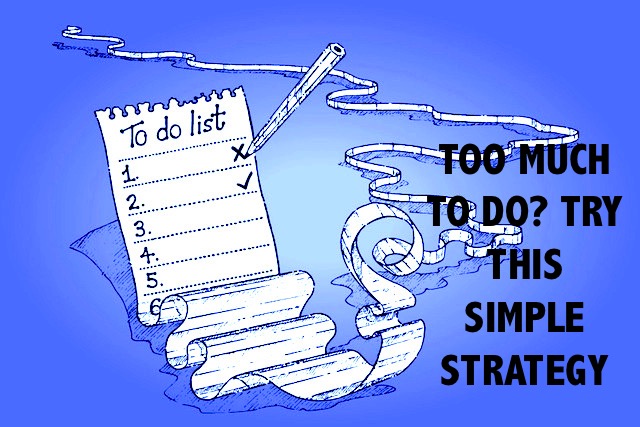Running a property business can often feel overwhelming, trying to juggle all the variables of different deals, the associated admin, inbound and outbound calls, business development…and don’t even mention the accounting and tax stuff.
It has been said that 80% of business people run their work day in a reactive fashion.
In other words reacting to all of the day’s demands as they arise, such as incoming email, incoming calls from SA guests, interruptions, operational demands like cleaning and maintenance etc.
This modus operandi of little planning, stop/start execution and lots of reaction typically leads to that common feeling of stress and overwhelm. We can all relate to finishing a day’s work with a long list of outstanding to-do’s and a feeling of anxiety- “I’ve got too much to do!”
Everyone has 176 hours in their week, the major difference is how we choose to spend them. Choose being the operative word. Yes, you have a choice to re-frame your day and the way you operate.
So what are the other 20% of business people doing?
This 20% choose to work their day in a proactive fashion. What this really boils down to is a subtle but powerful difference in focus, and it takes a concerted effort to plan and then remain mindful of your plan as you execute.
The Eisenhower Box
I’ll use the Eisenhower Box to demonstrate this subtle difference and how it applies to the reactive vs proactive person.
As the name implies, this concept was originally credited to US President Dwight D. Eisenhower. In deciding how to prioritise his time across tasks, it is said he would ask himself two questions. First, is the task important? Second, is it urgent? Of course you will have to define your own meaning of important.

Using this framework we can categorise each of our tasks and projects into one of these four quadrants within a few minutes. Taking a proactive approach means we focus on the tasks that sit in the Important but Not Urgent quadrant.
Every time I find myself slipping into reactive modus operandi the feelings of stress and overwhelm start to creep in and it feels horrible. That’s when I have found this matrix to be so powerful in re-framing the day or week with priority and focus.
There will always be those fires to put out and certain time sensitive tasks but you’ll be surprised at how these reduce when you work in a proactive manner.
Here’s a simplified explanation of the four quadrants:
1. Important and Urgent – for example a last minute booking request from a direct contractor guest, a request for information from your accountant to get accounts/VAT filed in time, submitting an offer for a property before the closing date
2. Important but Not Urgent – doing exercise, business development, long term planning, working on a project that will make your business scalable
3. Not Important but Urgent – various interruptions that break concentration, breaking your focus to check every email and text the second you hear a “ping”, dealing with the person shouting the loudest
4. Not Important and Not Urgent – activities that just waste time, procrastination, going off on a web surfing tangent when researching property deals, excess time checking the latest news, facebook updates
Needless to say, the first priority goes to the tasks that are both Important and Urgent. However as much as possible, the proactive person aims to spend most of their time in the Important but Not Urgent quadrant. These are the activities that generate production and lead to results.
As the famous Eisenhower quote goes:
“What is important is seldom urgent and what is urgent is seldom important.”
Without being mindful to prioritise effectively, a property investor can very quickly fall into the trap of rushing to deal with all the Urgent tasks (including the Urgent and Not Important) while the Important but Not Urgent tasks get pushed down the queue.
After dealing with your Urgent and Important tasks, your second priority should always be to invest time on the Important tasks that are Not Urgent. Only after some time in quadrant 2 should you move onto the urgent but not important tasks.
As for things in the 4th quadrant, well you really want to start dropping these. This is an opportunity to create more time for the important things in your day
Building this into your life
Like all good habits, this takes a period of intentionally phasing it in. However with a little effort, the practice of consciously filtering your tasks and incoming distractions based on their importance, will result in you becoming more productive as you do less of the ‘Not Important’ things.
Once again, the proactive property professional wants to spend most of their time in the Important and Not Urgent quadrant. Plan ahead and start with the tasks that are important. Mastering this practice will give you a powerful advantage and a feeling of control in all areas you choose to apply it.
Now, because I know that life and business can throw all sorts at us, here’s an extra little hint that I learned a few months ago – schedule in a daily “chaos hour”. Use this time to finish off loose ends that originated from the Urgent and Important things cropping up earlier in the day. If you’ve had a good day with no major interruptions then use this time for more Important but not Urgent activities.
What tools or techniques do you use to manage your priorities? Share them in the comments below.

